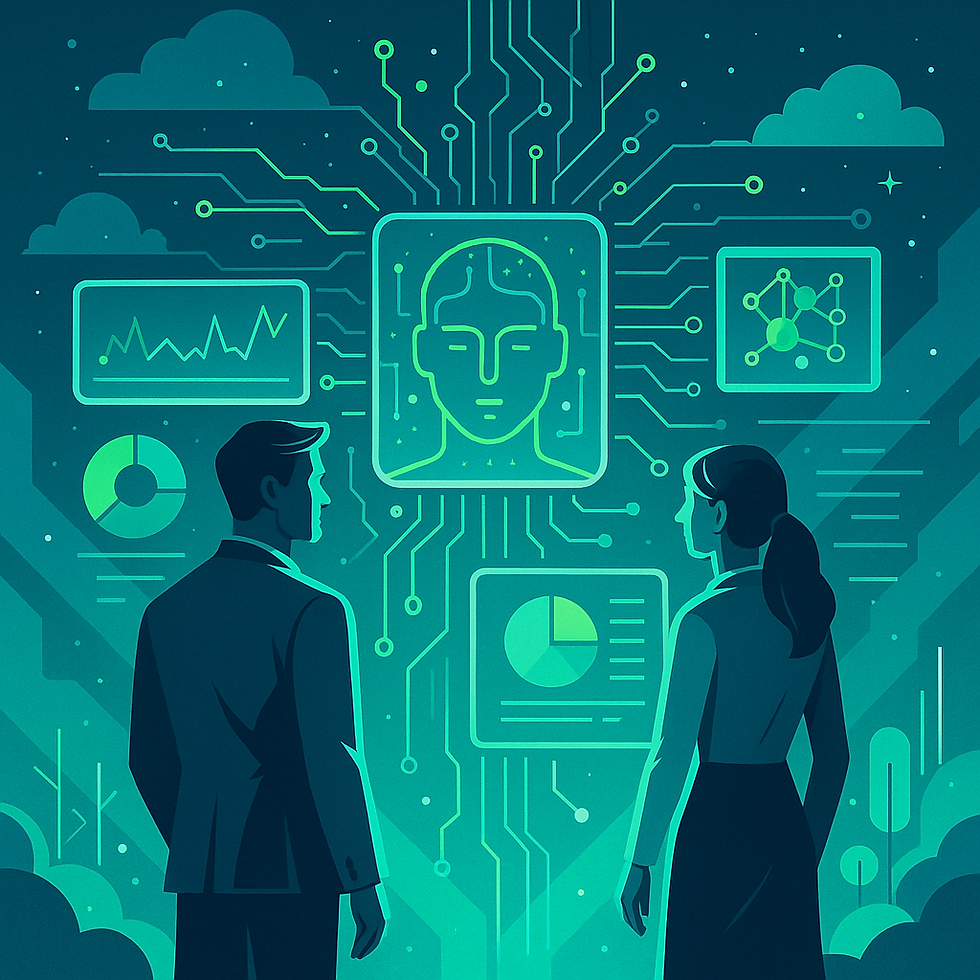From Steam to Silicon: Why This AI Revolution Demands a Human-Centered Transformation
- Neil Phasey
- Aug 26
- 3 min read

We’ve been here before.
A world-changing technology appears. Jobs are displaced. New industries emerge. Power structures shift. And amid the chaos, a few brave leaders step forward, not just to adopt the technology, but to reshape humanity’s relationship with work itself.
The steam engine did it. Electricity did it. The internet did it.
And now, AI is doing it again, but faster, deeper, and more invisibly than ever before.
But here’s the catch: This revolution isn’t just about machines getting smarter. It’s about humans being invited, demanded, really, to get wiser.
This Isn’t Just Technological Change. It’s Total Transformation.
The AI wave isn’t a toolset upgrade. It’s a full-spectrum shift in:
How work gets done
How value is created
How time is used
What leadership means
And what it means to be human in the age of intelligent systems
Too many organizations are still treating AI like another IT project or automation playbook, focused solely on cost reduction and speed. That may win in the short term, but it’s not transformation. It’s optimization.
Real transformation asks bigger questions:
How do we reimagine work, not just automate tasks?
What human capacities become most valuable in an AI-powered world?
How do we reclaim the time we recover and reinvest it in purpose, creativity, innovation, and connection?
These are not IT questions. These are existential leadership questions. And most companies aren’t ready to answer them.
History’s Pattern Is Clear: Those Who Re-humanize Win
During the Industrial Revolution, companies that simply mechanized labor increased output, but often at the expense of health, dignity, and morale. Over time, those that invested in worker safety, education, and engagement built resilient, loyal, and innovative workforces.
We’re now watching that same story unfold, with AI as the new steam engine.
Except this time, it’s not just physical labor being replaced, it’s knowledge work, creativity, decision-making, and even emotional labor.
The difference-maker in this new era?Not just who has the best AI tools… but who has the best strategy for elevating human potential.
Transformation Starts With a Human-Centered Operating Model
At Hybridyne Solutions, we don’t just help organizations adopt AI, we help them rearchitect how work happens. Our approach begins by asking:
Where is time being spent, and wasted?
Which tasks can (and should) be automated?
Where is human capacity underused or misaligned?
How can you reallocate recovered time to fuel innovation, collaboration, or wellbeing?
What strengths, skills, and emotional capacities will your people need to thrive?
In this model, AI becomes a force multiplier, not a threat.And transformation becomes human-centered, not tech-centered.
A New Era Requires a New Kind of Leadership
This isn’t the time for leaders to cling to old paradigms.It’s time for a new archetype: Leaders who see AI as a lever for human elevation, not just efficiency.
Leaders who:
Conduct role audits instead of talent purges
Embed adaptability and emotional intelligence into culture, not just performance metrics
Use time recovery to fuel purpose, not just profit
Make room for meaning, not just output
This is the heart of true transformation.It’s what we call intelligent reinvention, aligning digital intelligence with human development to create organizations that are scalable, sustainable, and soulful.
From Steam to Silicon... to Soul
If history has taught us anything, it’s that technology changes the game, but humanity changes the outcome.
This AI revolution won’t be led by algorithms.It will be led by those who know how to orchestrate synergy between human and machine, with courage, clarity, and compassion.
Welcome to the age of Human+AI.The real question is:Are you transforming with it, or being transformed by it?
Let’s choose the former.
Let’s build what’s next, together.




Comments